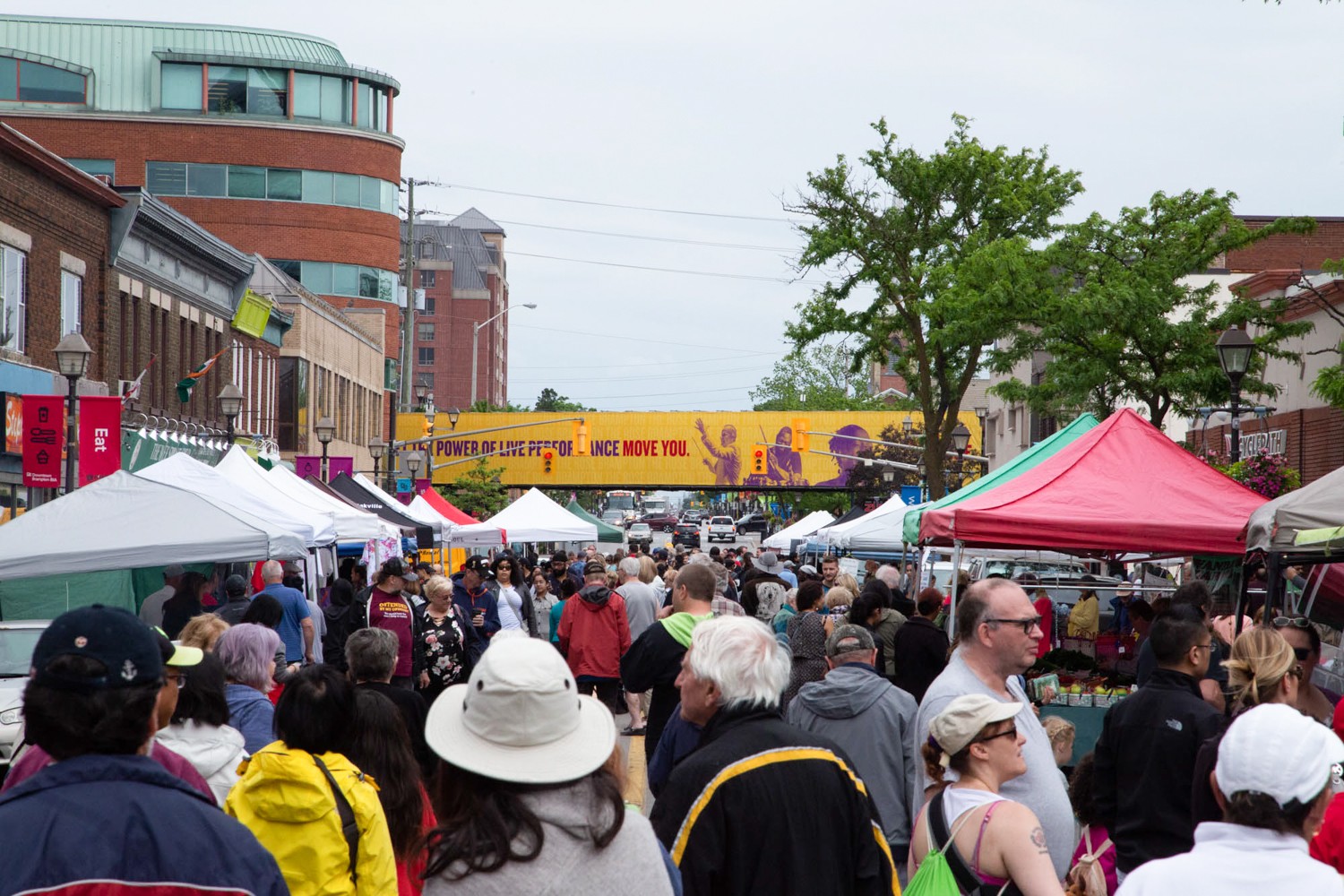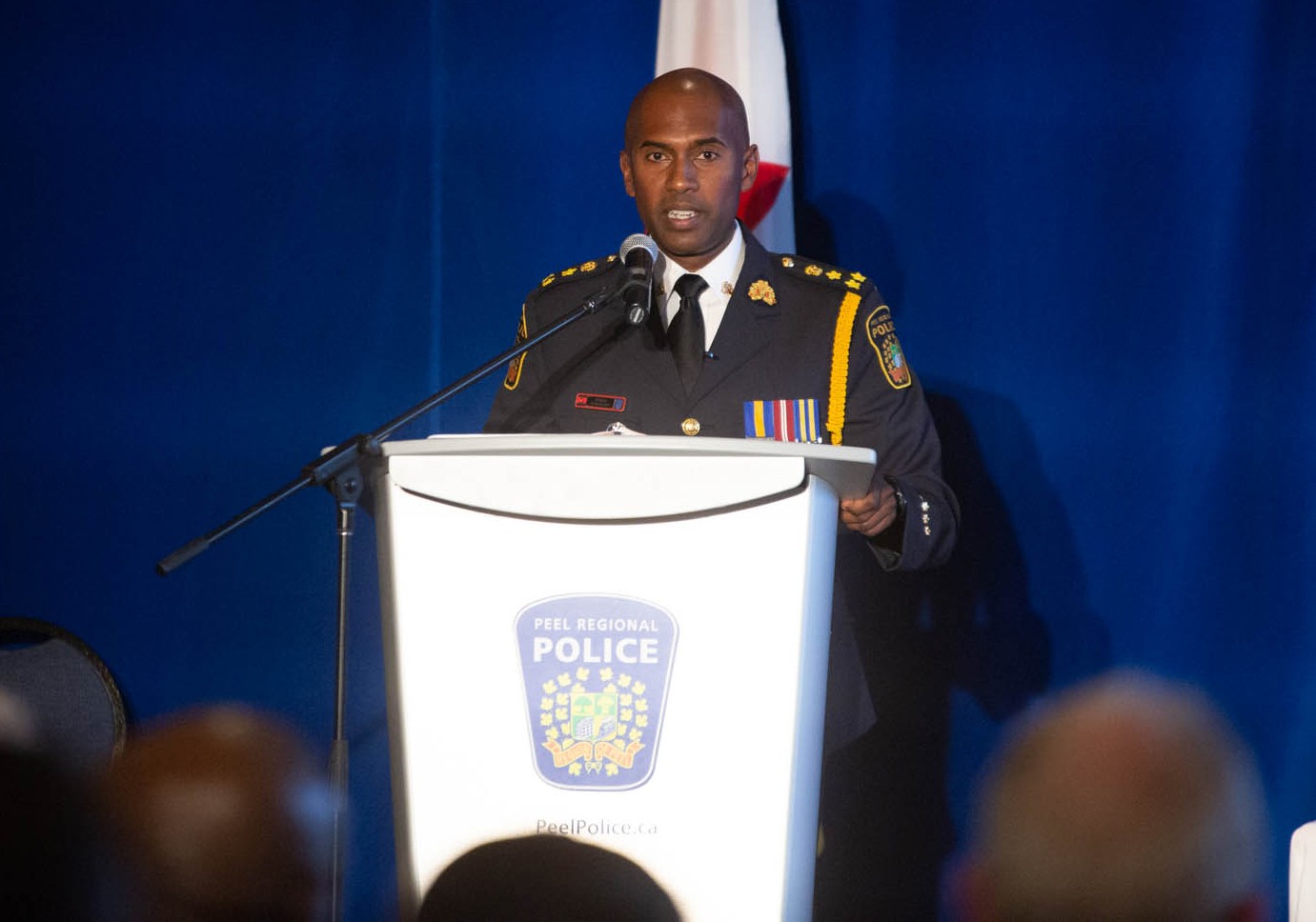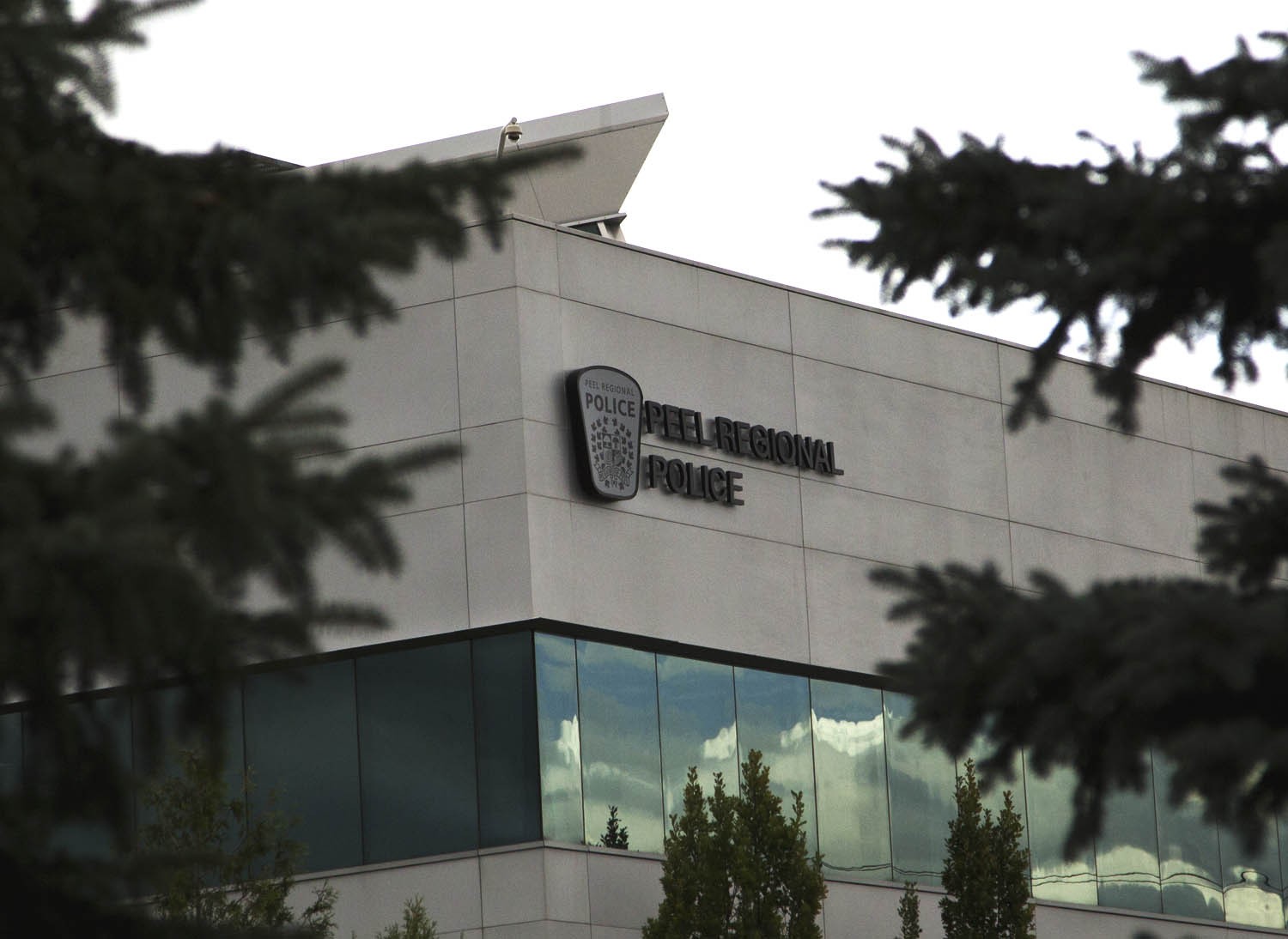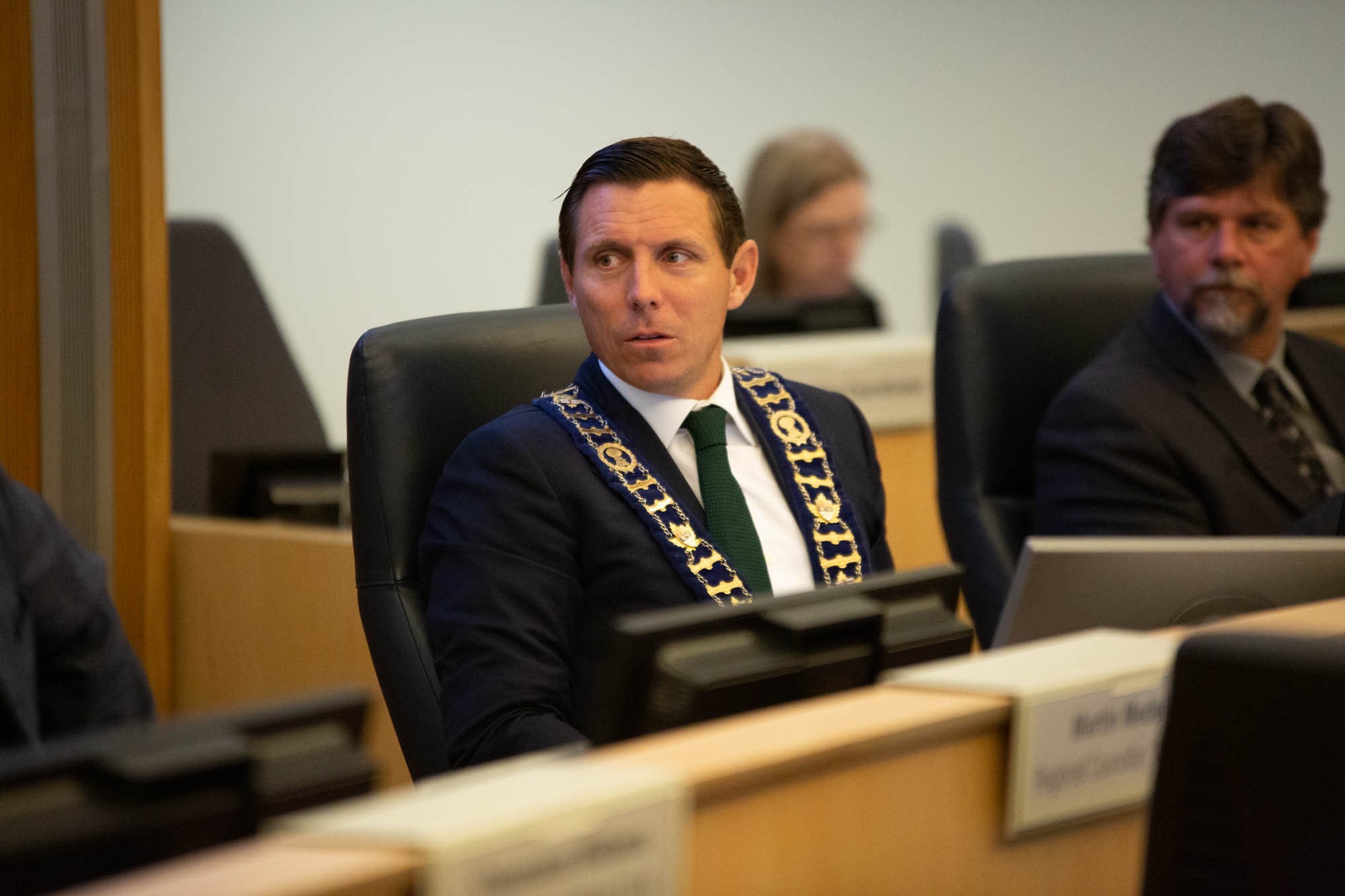
Peel police to double presence, add new substation in downtown core following violent incidents
The political parties vying for your vote in next Monday’s federal election are still sorting out what they believe are the key issues impacting Canadians that will help drive them to the polls. The general consensus is the economy, climate change, a series of scandals that have plagued current prime minister Justin Trudeau (SNC Lavalin, wearing blackface) or the one dogging his main opponent Andrew Scheer (hiding his partial American citizenship).
But if Wednesday night’s town hall at city council in Brampton is any indication, the closest issue to the hearts and minds of residents is a perceived uptick in violent crime.
This was brought into sharp focus last Saturday at 11 a.m., when in the midst of the very last farmers’ market of 2019, police say a stabbing took place that was “targeted” and not a “random attack.”
The triple stabbing happened inside a residential unit above a store on Main Street, just north of Queen. A woman was taken into custody. When officers arrived, they found the woman and two men suffering from stab wounds. She was taken to a trauma centre in life-threatening condition, which has since been upgraded to non-life-threatening. Peel paramedics took one of the men to a trauma centre in serious condition and another to the local hospital in the same state.

Brampton's farmers' market was the site of a "targeted" stabbing this past Saturday.
An attack in broad daylight only feet from a popular market has had a chilling effect on the community, and the fact the suspect and victims knew each other didn’t mollify residents.
This violent incident was followed up with another early Thursday at 4 a.m., when shots were reportedly fired around Main Street South and Nanwood Drive, near the Peel Village neighbourhood. Peel police found a number of shell casings at the scene and said two vehicles were spotted leaving the area. Again, investigators said the incident does not appear to be random. Police are looking for suspects and hope anyone with surveillance video of the incident will contact them.
The first incident caused a vast shaking of the collective soul of those at Saturday’s market. One resident on scene, who often attends the market, said ruefully, “They should blow this whole place [the downtown] up.”
How a community responds to the problem of violence was addressed in a hastily called town hall at council on Wednesday night. The public gallery was filled as Peel’s new police chief, Nish Duraiappah, addressed the audience, then stayed around to listen to more than 30 delegations unpack their concerns. There were also comments from a Peel Region public-housing official, city councillors and Mayor Patrick Brown.
But all eyes were on Duraiappah, who just over a week ago took on the chief’s job after the retirement of Jennifer Evans earlier this year. He won the post after an extensive search by the Peel Police Board, which included Brown.

Peel Regional Police Chief Nishan Duraiappah
The region’s top cop was quick to ease the minds of residents by announcing Peel Regional Police will soon lease space in the city’s Four Corners (at 15 Queen Street West) and open up a new substation to offer a presence in the core. It will also increase the number of officers in the downtown from six to 12 and have one patrol the farmers’ market next year.
The “urgent incident” at a residence above a storefront on Main was a startling reminder that violent incidents can happen anywhere and at any time. The shooting Thursday only added to the general disquiet gripping the city, as gun-related and gang-driven crimes have infested the streets and raised alarm bells in the past few years.
In a poll taken by The Pointer during the run-up to the 2018 municipal election, a majority of residents said they felt less safe in their city than before. Crime was very much a concern, as was the safety of their loved ones.
The chief, who spent 25 years on the Halton Region force, is known as a reformer. In a recent profile in The Pointer, he said a deep, integrated relationship between police and the community is how he hopes to build up trust. That trust will be key to tackling violent crime.
During his chat, he told the audience through a series of slides that violent crime is actually down — but admitted afterward that events like last Saturday’s can cause deep fissures in a community. While most of the spill-off problems arising from serious social ills are solvable with better housing or engagement with those in need of help, when things bubble over into violent outbursts, it’s the job of police to dampen the worries of the public and show they are taking an active role.
He said police are used to responding to a “confluence of problems” during their hours on the job. He prefers a “collaborative response” to finding solutions to issues like rising gun use. He pointed to a “Community Safety Wellbeing Plan” employed in Halton.
Even if statistics say violent crime is down, numbers don’t ease fears. “Your perception is your reality,” he told the audience at city council.

This collective response to ensuring public safety means leaning on all members of society for help, from police to citizens to regional officials, city councillors and the social-services agencies that have street cred and work closely with people using drugs and those who can’t find proper lodging.
Aileen Baird, director of housing services at the region, talked about the concentration of “street housing” in Peel and the problems faced by those in transitional housing. She called them “hard-to-house clients.” The complexity of finding solutions for people on the fringes of society is an ongoing challenge for workers on the front lines.
The goal, she said, is “to direct people from shelters to permanent homes,” and the region’s 10-year plan will adapt and evolve to help those in need of safe and healthy accommodation. The problem in downtown Brampton is that some people live in seedy accommodation, owned by slum landlords, or populate the nearby boarding houses on the outskirts of downtown. There are five emergency shelters in the region, two in Brampton for men, and one youth shelter.
While crime comes in many guises, some acts aren’t considered crimes at all — just vagrancy issues as people wander the streets, especially in the summer months.
The bottom line, whether it’s violent crime or drifters standing in doorways or changing their clothes in the foyer of a downtown restaurant, the problems have to be addressed, said Sabena Coulter, owner of Fanzorelli’s at George and Queen. She pointed out in her presentation that it's hard for businesses to respond to certain crimes without a police presence. Whatever the police report, she said, it gives the city a black eye and it’s bad for business.
As one resident said in her delegation, issues with vagrancy or panhandling “bleed out and into our neighbourhoods.”
Brown said one way to nullify this is creating density in the downtown and beyond. He pointed to two major condo projects now being built along the Queen corridor. As the city expands and the Reimagine initiative (to fix the water mains problem downtown) is re-started at some future date, the general atmosphere in the core will improve and local businesses will have a better chance to prosper.
A startling crime like the one that took place during the Saturday market makes it harder for Brampton to sell itself.
Last Saturday’s “random incident” is a byproduct of a city that is now the second fastest growing in the province, said regional councillor Martin Medeiros, who oversaw the town hall once Brown departed. He noted that 40 people a day are moving to the city, and some end up in the downtown, short of money with limited housing options.

Brampton Mayor Patrick Brown
Lorene Hatelt, who has lived in Brampton since 1969, is happy to see a much bigger police presence but said she is distressed by the “run down” conditions in the city, especially downtown. “I’m so proud of being from Brampton,” she said in her presentation but quickly noted she’s also “very disillusioned” and “ready to leave.”
“It hurts me to talk this way,” she said.
She wants police to institute a “broken windows” policy, meaning all crime, no matter how small, is attended to and eventually solved.
In sync with the chief, Hatelt said the public should do all it can to become part of the solution to the myriad problems facing the city. “How can we help?” she asked rhetorically, before talking her seat and awaiting an answer.
The chief had plenty of them for a full house as he made a presentation on crime issues at the Greenbriar Community Centre on Monday. He told The Pointer the day after that “single incidents [like Saturday] can have a disruptive effect on a community,” and the role of police is to address both the short- and long-term impacts of crime, especially violent ones.
The Brampton Business Improvement Association has held a series of Downtown Stakeholders Meetings with the hopes of finding creative solutions and coming up with a Community Improvement Plan. Solutions to crime can be as simple as lighting up darkened laneways or holding “nurturing neighbourhood walks” over a five-week period. Mayor Brown and councillors Paul Vicente and Rowena Santos will participate in the next one, scheduled for October 26.
While politicians usually get a 100-day honeymoon period in which they get to acclimatize themselves to their new jobs, Duraiappah hit the ground running. Brown praised his unique experience, his open-mindedness to problem solving and his wholesome, collaborative approach to policing.
Saturday’s incident at the market shows the need to be vigilant when it comes to crime. The chief vows that his force will respond quickly and professionally when violence does take place.
Before he left, Brown vowed to continue his crusade for more federal funding to address gang-related violence in his city.
Political pundits might think other issues top the list for voters heading into Monday’s federal election, but they didn’t attend Wednesday night’s town hall in council chambers.
Submit a correction about this story


